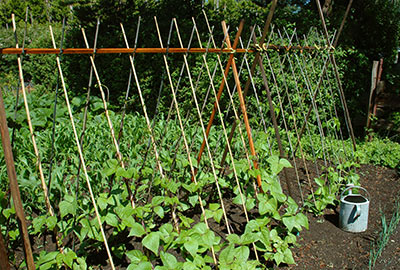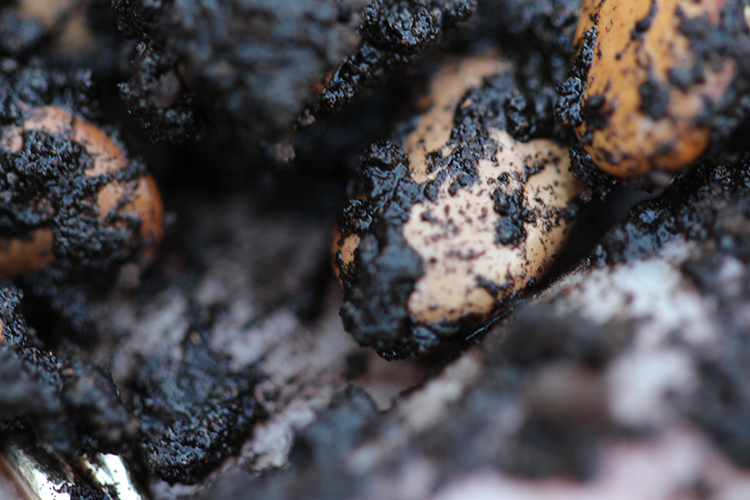Getting Started With Pole Beans in California's Warmer Inland Areas

Pole snap beans can be tricky seasonally because they are intolerant of frost and cold temperatures, which may be common overnight during winter in many of California’s inland areas; and also of hot temperatures above about 85°F. For precise suggestions regarding the best times of year to grow pole snap beans in your area, go to GardenZeus, enter your zip code and go to pole beans; then go to “Seasonal Care” in the “Seasonal and Harvest” section.
When space allows, GardenZeus recommends growing pole snap beans rather than bush snap beans; check to be certain which type of snap-bean seed you are purchasing and planting, or refer to links in the “Recommended Varieties/Cultivars” section above for pole-bean varieties.
Growing pole beans rather than bush beans will allow for the greatest yield in your available space at all 3 stages of bean harvest (as snap beans, shelling beans, and dry beans).
Yield with pole snap beans varies widely based on many factors, including soil fertility, sunlight, other growing conditions, and bean variety. Generally 1 to 3 pole bean plants per person, should be sufficient for light consumption of beans, while 5 to 15 or more plants may be needed per person to satisfy bean lovers, especially if harvests are wanted at 2 or all 3 stages of bean development, or dry beans are desired for long-term storage.
When planting beans in new or uncultivated soil, or in soils where beans haven’t been grown for a few years, consider inoculating your seeds before planting. Legume inoculants are powders containing Rhizobium bacteria that help legumes to fix nitrogen from the air into root nodules. Pay close attention when purchasing an inoculant to be sure that it is labeled for your intended legume variety(s).

Beans are sensitive to root disturbance and generally should not be transplanted. GardenZeus recommends starting pole beans from seed. Warm soil and daytime temperatures of at least 60°F are important to successful pole bean cultivation. Optimal soil temperature for pole-bean-seed germination is 75° to 95°F. Seeds may germinate poorly or rot, and seedlings may grow slowly during cold weather.
When the simple-but-important conditions are met for bean health, including no root disturbance, well-drained soil, loose soil with good structure, and a warm sunny location, beans can be an easy and rewarding garden vegetable. Under these conditions they tend to be relatively low maintenance and less prone to disease to many other garden vegetables.